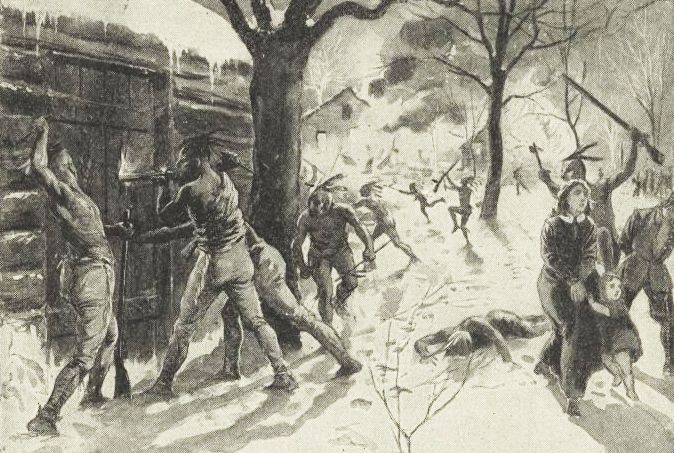Authors:
Historic Era: Era 2: Colonization and Settlement (1585-1763)
Historic Theme:
Subject:
| Volume 1, Issue 1


Authors:
Historic Era: Era 2: Colonization and Settlement (1585-1763)
Historic Theme:
Subject:
| Volume 1, Issue 1
Editor's Note: James L. Swanson is the author of the 2006 New York Times bestseller, Manhunt: The 12-Day Chase for Lincoln's Killer. His most recent book is The Deerfield Massacre: A Surprise Attack, a Forced March, and the Fight for Survival in Early America, in which portions of this essay appeared.

In the ink-black predawn of February 29, 1704, the sleeping inhabitants of Deerfield, Massachusetts pull their blankets higher and huddle closer to stay warm. The village is a remote outpost of 300 souls on the isolated northwest New England frontier of a vast, early America.
Outside, the wind howls. It whistles around the eaves. Three feet of snow blanket the ground, muffling sounds in the night and drifting high against the tall palisade wall protecting the town. Life on the edge of the English empire is not easy. The town is the colony’s northwestern-most outpost; Canada is closer than New York.
The townspeople are surrounded by a dark and dangerous wilderness, by wolves, and — some believe — by witches. Only recently, Salem discovered in its midst, and put to death, 20 alleged witches for “entertaining” Satan. In faraway Boston, Puritan preachers issue religious polemics. Here, in Deerfield, the people are more concerned with attacks by Indians. They have happened before, and these people live in dread of another one. Still, the snow is deep and the winter fierce. Who would risk an attack in such weather?
At 4:00 a.m., the Reverend John Williams is startled awake by the thud of a tomahawk smashing into his front door. This is the opening moment of the Deerfield Massacre, an often-forgotten tale of war and empire, life and death, endurance and survival, family and faith, and resurrection and redemption from a long-lost America, when the destiny of a continent was at stake.
Deerfield lies between the Connecticut and Deerfield Rivers in the Connecticut River Valley about 90 miles west of Boston. The picturesque town is now a popular tourist destination, a kind of miniature Williamsburg, which delights visitors with its Revolutionary War-era colonial houses stuffed with priceless antiques, a fine collection of early American silver, two museums, educational programs, harvest festivals, and a seasonal crowd of “leaf-peepers” who throng to the town to behold gorgeous autumn leaves.
During the school year, students from the prestigious Deerfield Academy buzz across its pastoral campus. If you go there today, there is little evidence of what made this town famous. That story lies buried below the surface.
Once, it was the most infamous episode in early American history. Today, it has been largely forgotten. In an obscure 150-year-old museum in this small village in western Massachusetts, there stands what was once the most revered relic from early America: a massive, tomahawk-scarred door that symbolized the notorious Deerfield Massacre. This impregnable barricade, which captivated early Americans as the “Old Indian